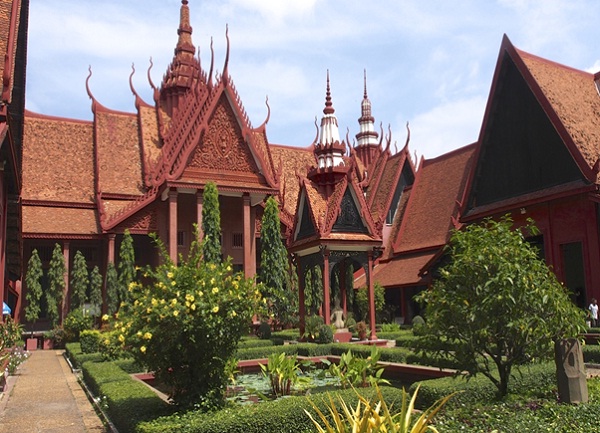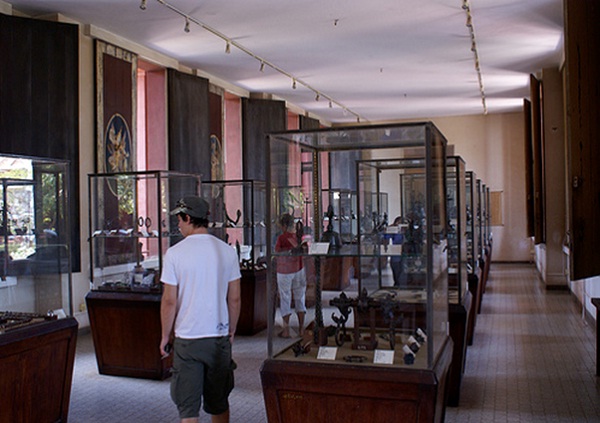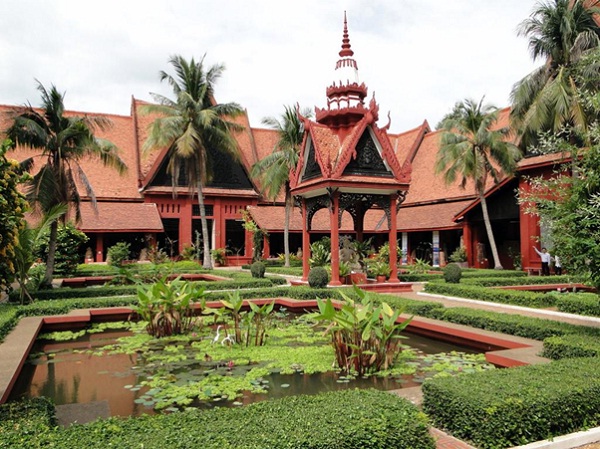The National Museum of Cambodia is located on Street 13 in central Phnom Penh, next to the Royal Palace. The museum is bordered by Streets 178 (to the north), Street 13 (to the east) and Street 184 (to the south). It is Cambodia’s largest museum of cultural history and is the country’s leading historical and archaeological museum. Travel Indochina
The museum buildings were constructed between 1917 and 1924, with the inauguration of the museum in 1920. The distinctive rust-red National Museum was dedicated by King Sisowath in 1920. The central section of the east façade was renovated in 1968 under the supervision of Cambodian architect, Vann Molyvann.
The museum comprises four pavilions, facing the pretty garden. Most visitors start left and continue in a clockwise, chronological direction. The first significant sculpture to greet visitors is a large fragment – including the relatively intact head, shoulders and two arms – of an immense bronze reclining Vishnu statue recovered from the Western Mebon temple near Angkor Wat in 1936. Cambodia travel tours
The museum houses one of the world’s largest collections of Khmer art, including sculptural, ceramics, bronzes, and ethnographic objects. The Museum’s collection includes over 14,000 items, from prehistoric times to periods before, during, and after the Khmer Empire, which at its height stretched from Thailand, across present-day Cambodia, to southern Vietnam.
Over 5000 objects are on display including Angkorian era statues, lingas and other artifacts, most notably the legendary statue of the ‘Leper King.’ Though the emphasis is on Angkorian artifacts, there is also a good collection of pieces from later periods, including a special exhibition of post-Angkorian Buddha figures.
Housed in a lovely open Cambodian style structure, the museum hosts a number of exhibitions surrounding the topics of Khmer culture. The most noteworthy exhibits are a 6th-century statue of Vishnu, a 9th-century statue of Shiva and the famous sculpted head of Jayavarman VII in meditative pose. Through permanent and temporary exhibits of vivid images, descriptive accounts, unique artifacts, and interactive media presentations, the museum celebrates the remarkable Cambodian achievements and traditions kept alive through centuries of hardships.
The museum is equally noteworthy for its impeccable, verdant garden courtyard with four lotus pools. In the centre of the courtyards is a renowned statue of the Leper King or Lord Yama – the Deity of Death according to Hindu mythology.
Travel lovers.
Read more:








